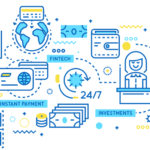“Fintech for good” is an often-used phrase, but what does that really mean? And does it match reality or is it just a fantasy that makes us feel better. Let’s hear what some experts have to say:
- Nicole Valentine, fintech director at the Milken Institute – fintech is only as good as what it can do. It must empower, equalize, and bridge gaps in banking systems to provide social economic mobility and opportunities for homeownership and entrepreneurship.
- Kim Minor, senior vice president in charge of global marketing at Provenir – fintech is driving significant innovation in the nonprofit sector, reinventing the business of giving by addressing economic shifts and making meaningful differences in local communities. It empowers organizations to address global needs, simplifies donation processes and creates innovative business models for nonprofits.
- Greg Ott, CEO of the fintech Nav – fintech for good means putting underserved audiences, like small businesses, at the center and embedding “good” in products. Empty promises are no longer accepted. Nav, for example, is committed to building intelligent products that simplify finance for small businesses, helping them thrive and benefiting communities and economies.
- Philip Hart, chief internal auditor at ClearBank – fintech for good is a genuine force for positive change and not just a marketing strategy. For instance, ClearBank’s collaboration with PayPoint and the Department of Work and Pensions has resulted in a system that delivers secure digital vouchers for benefit payments, expanding access and choice for the unbanked. In these ways, fintech has the power to address societal gaps and make a meaningful impact.
 BFC Bulletins Monthly News Digest
BFC Bulletins Monthly News Digest




